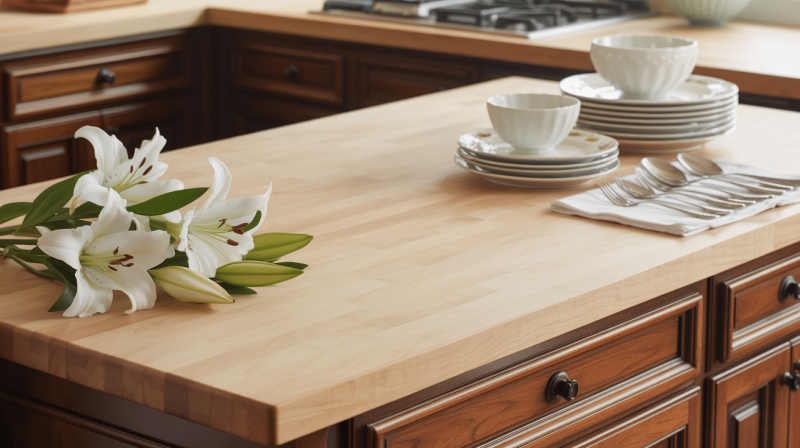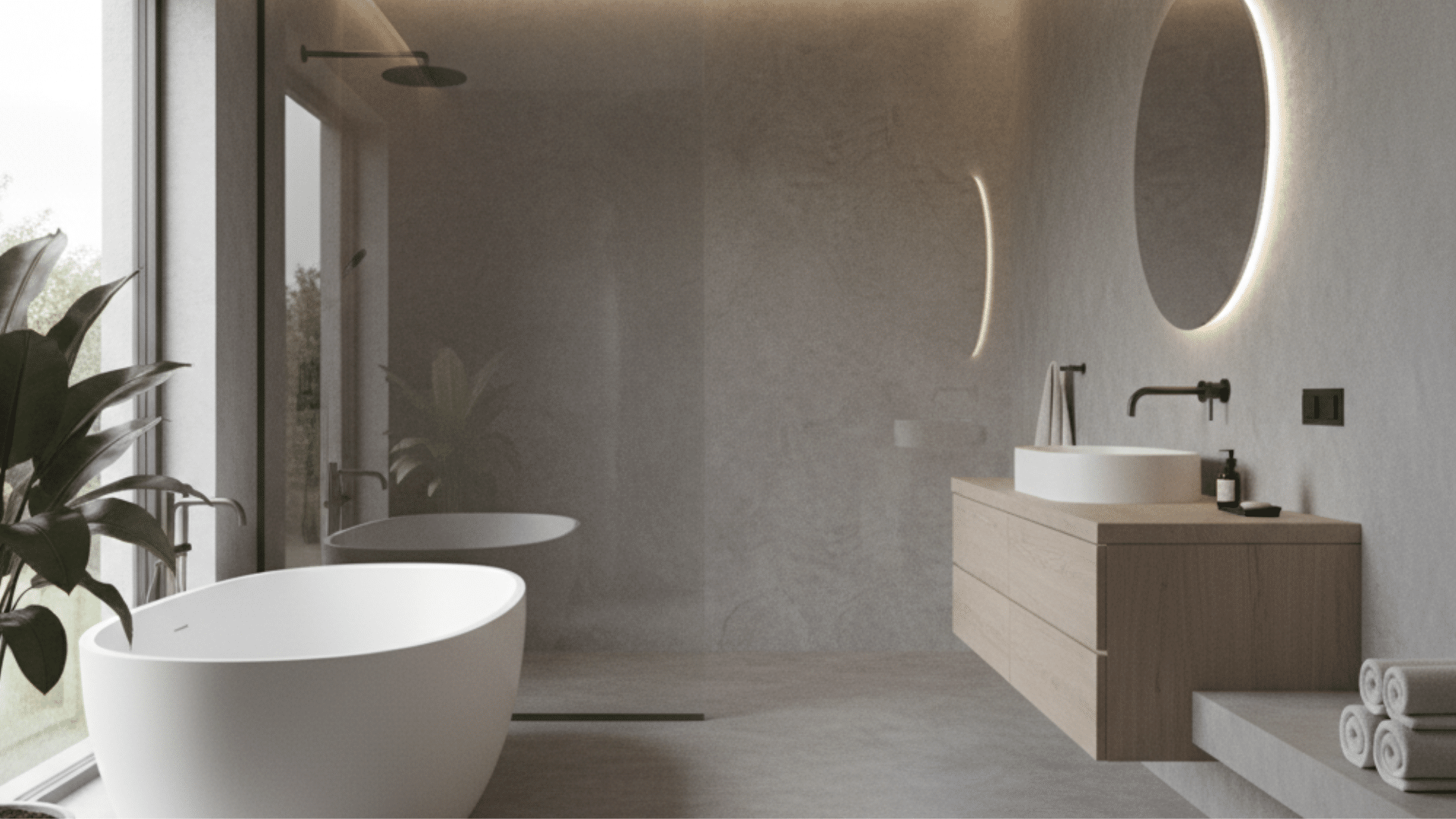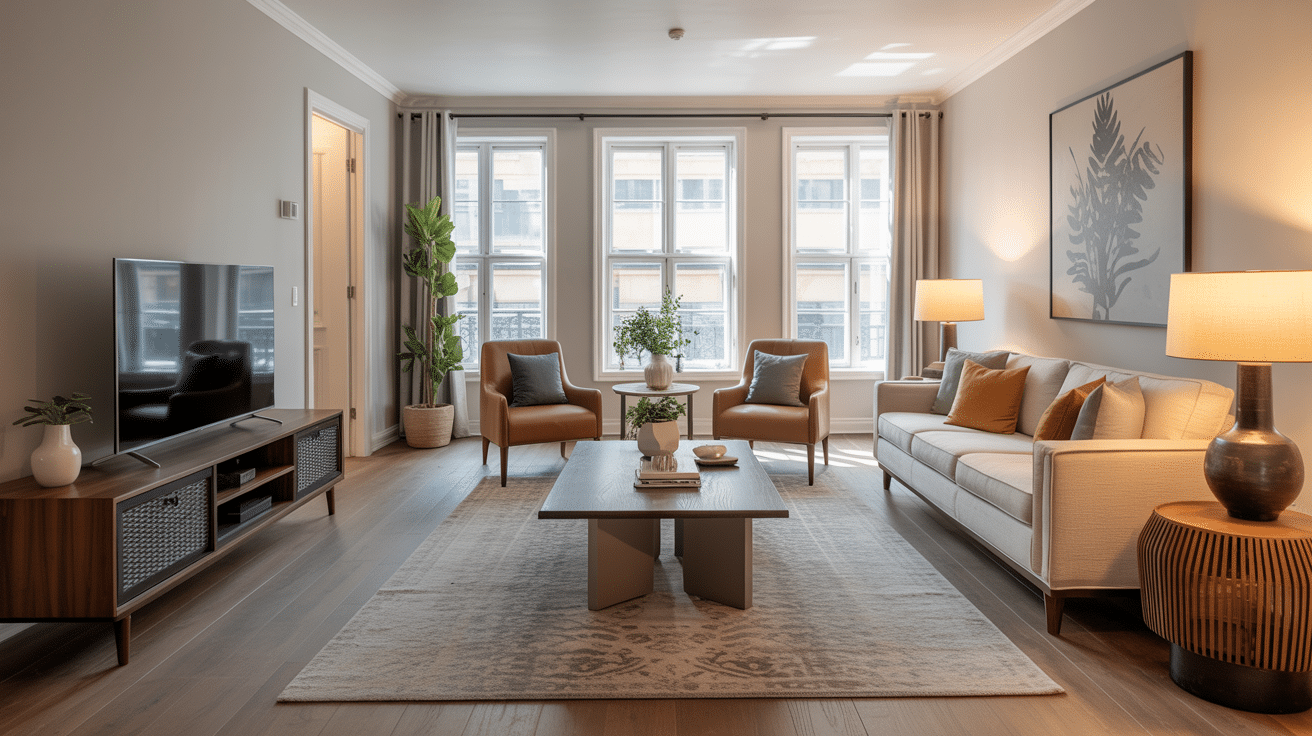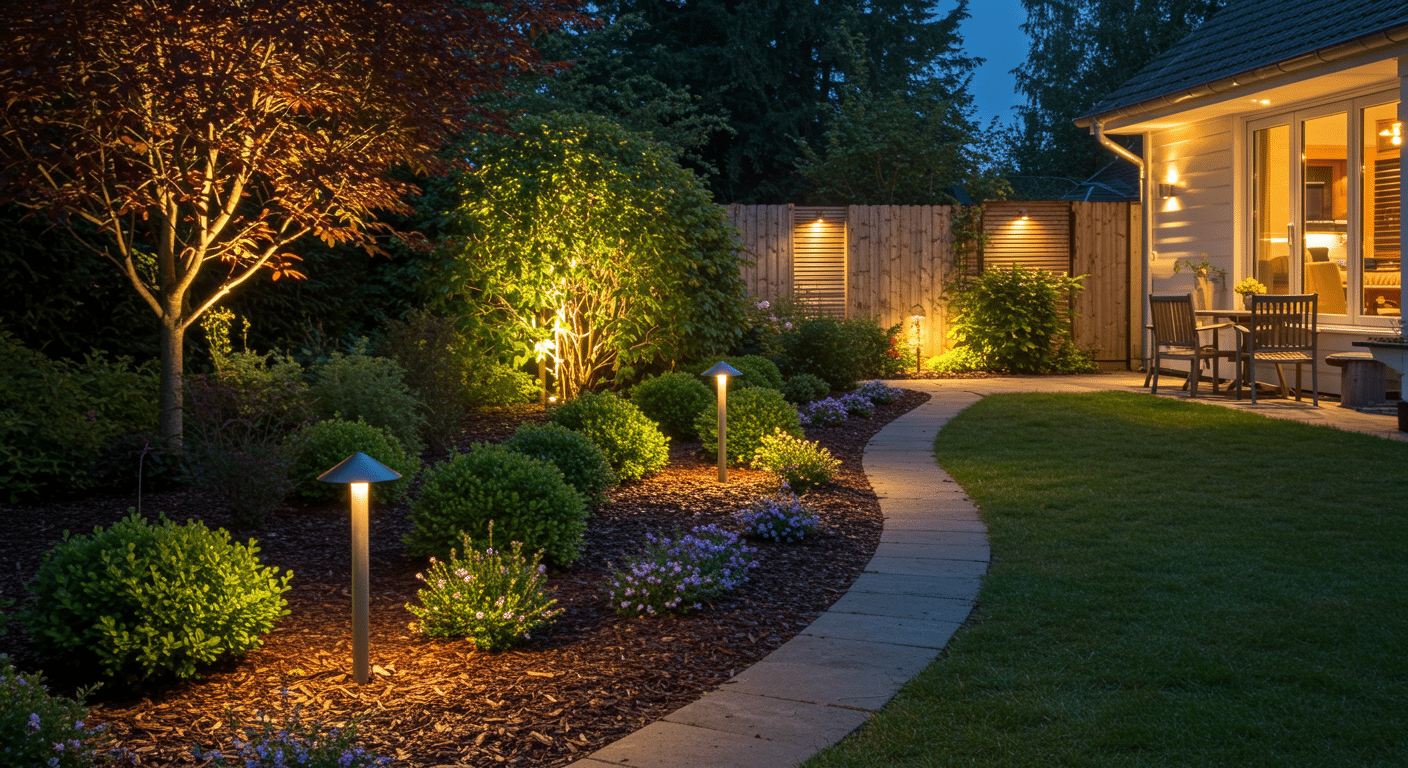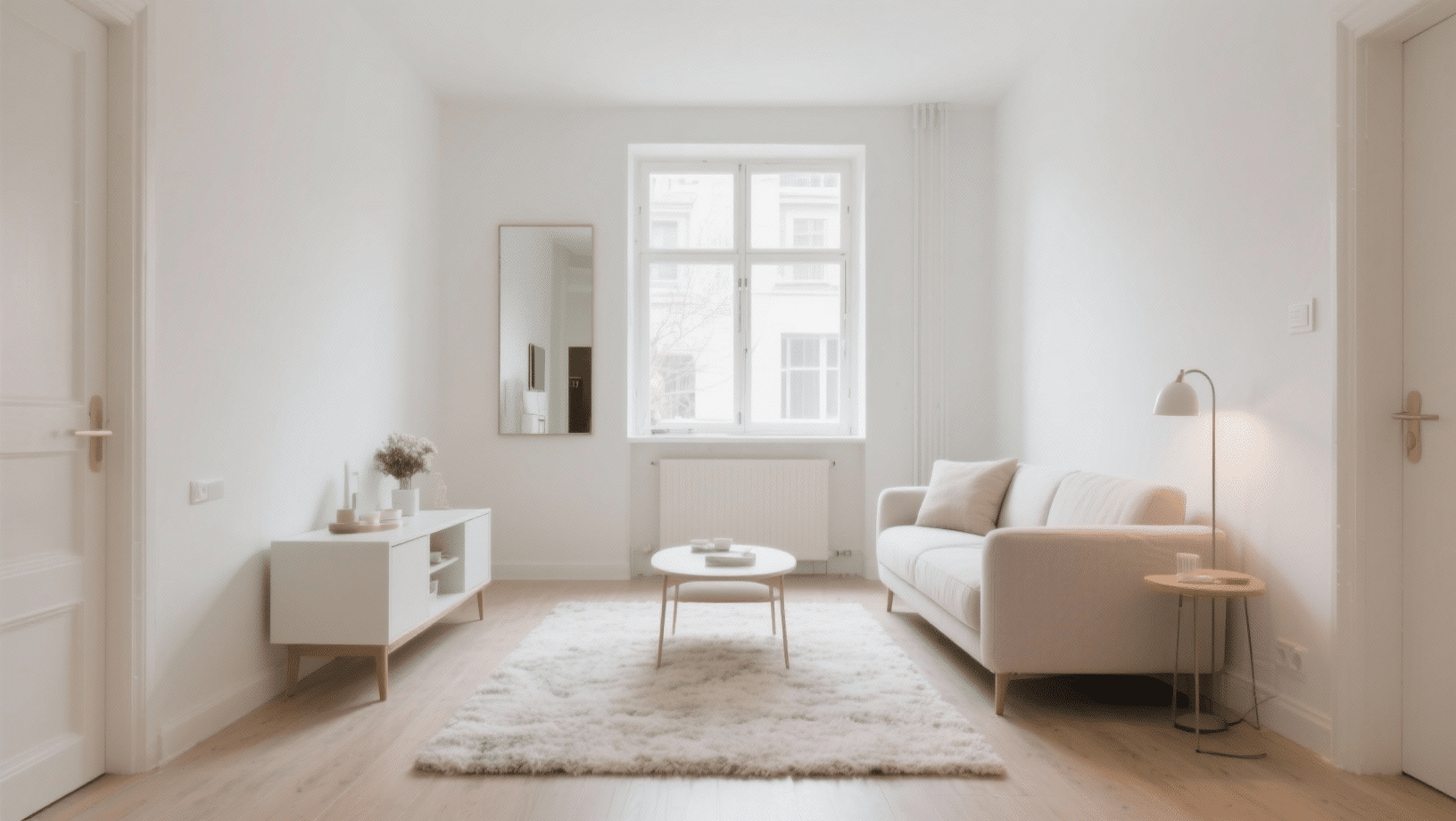Selecting the best wood for a butcher block countertop involves more than just selecting something that looks aesthetically pleasing.
Smart homeowners need to understand the different wood species, grain patterns, and how these surfaces interact with sinks and daily kitchen use.
In this blog, you’ll learn which woods are best suited for heavy cooking versus light use, installation and maintenance tips for butcher block.
Butcher Block Countertops
Butcher block countertops differ from standard wood counters in their thick, solid construction made from glued wood strips.
This creates a durable surface that can handle heavy kitchen use. Many people believe these countertops require constant upkeep, but that’s simply not the case.
Modern wood counters are surprisingly low-maintenance when properly sealed.
The real benefits shine through daily use. You can sand out scratches and dents, making them practically repairable for the vehicle’s lifetime. They offer a timeless appeal that works with any kitchen style.
Moreover, choosing responsibly sourced wood provides a sustainable option that reduces environmental impact compared to manufactured materials.
Popular Wood Choices for Butcher Block Countertops
Different wood species offer unique characteristics that make them suitable for kitchen countertops. Understanding each option helps you find the best wood for a butcher block countertop that matches your style and needs.
1. Hard Maple
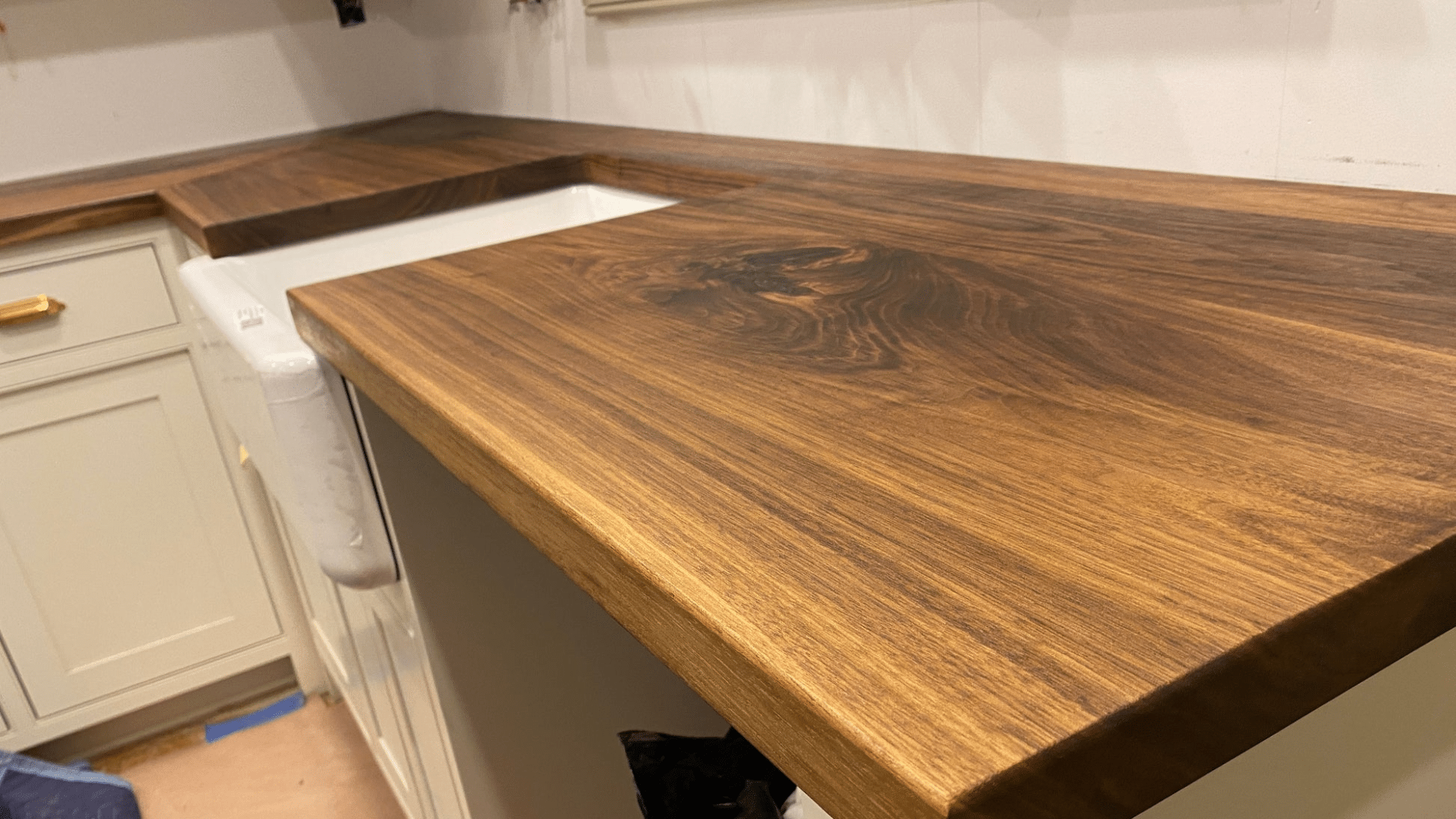
Hard maple stands as the gold standard for butcher blocks due to its incredible density and durability. This light-colored wood resists dents and scratches better than most alternatives.
Professional chefs prefer maple because it doesn’t absorb odors or bacteria easily. The tight grain structure makes it perfect for food preparation areas.
While slightly more expensive, maple’s longevity makes it a worthwhile investment. It takes stain beautifully if you want darker tones later.
2. Oak
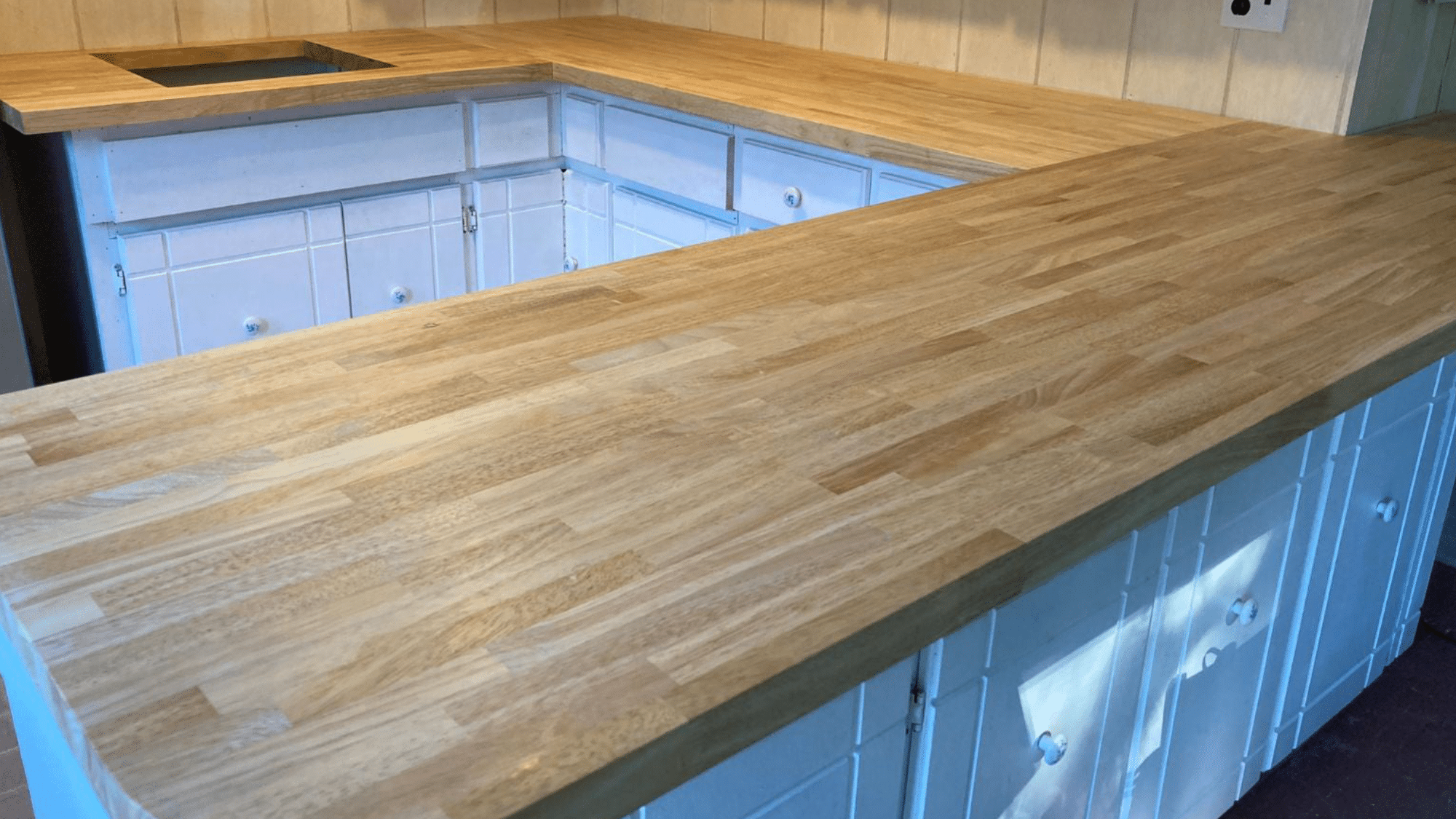
Oak brings rustic character with its prominent grain patterns and natural beauty. This traditional choice works well in farmhouse and country-style kitchens.
The open grain requires more sealing but creates stunning visual interest. Red oak offers warm tones, while white oak provides cooler hues. Oak handles everyday wear reasonably well, though it’s softer than maple.
The affordability and availability make it accessible for most budgets.
3. Walnut
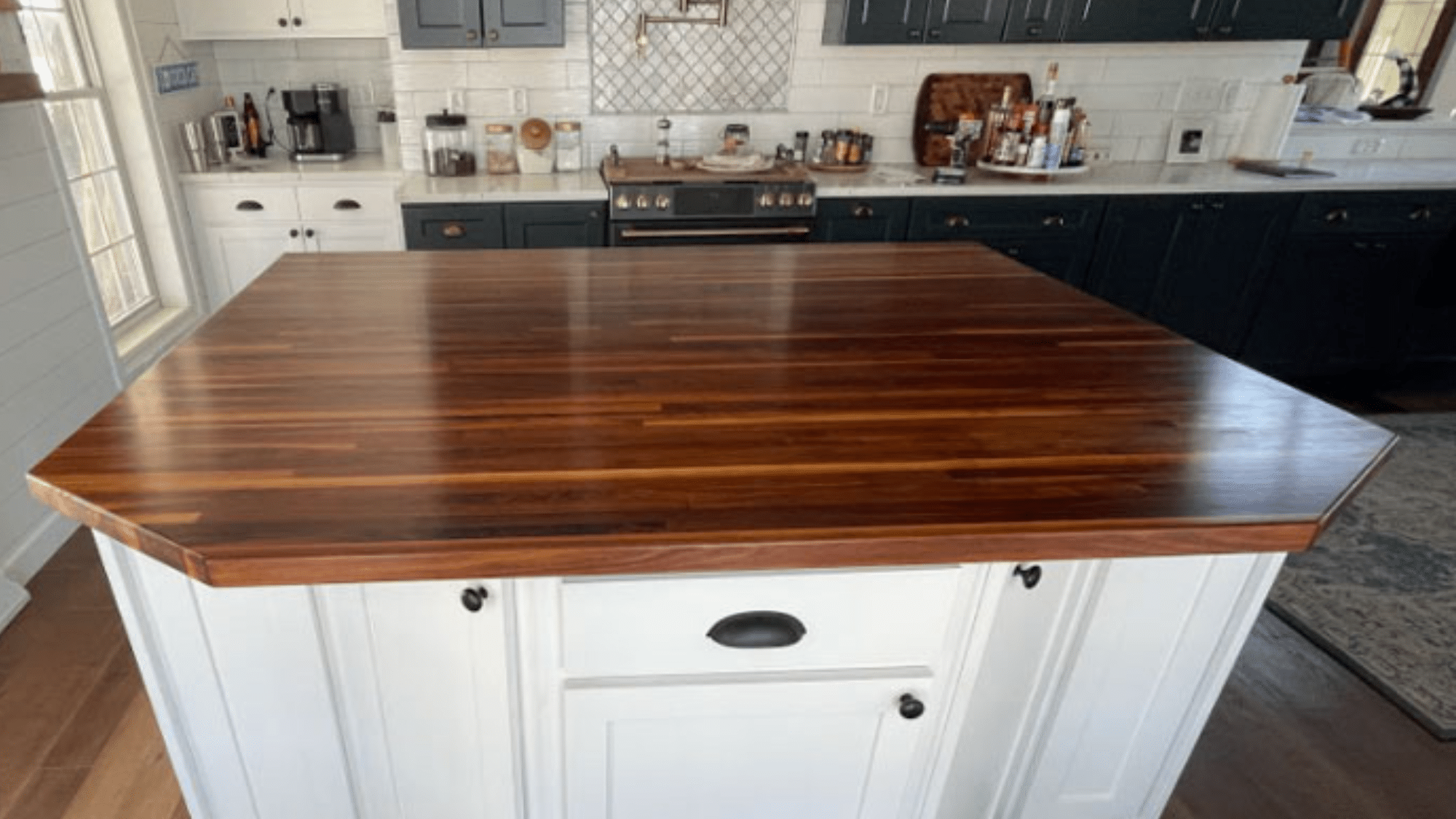
Walnut delivers luxury with its rich chocolate tones and smooth grain patterns. This premium choice creates stunning focal points in modern kitchens.
The natural oils provide some moisture resistance, but walnut requires careful maintenance.
It’s softer than maple, so expect more character marks over time. The cost reflects its premium status, but the beauty justifies the investment for those seeking the best wood for countertops.
4. Bamboo
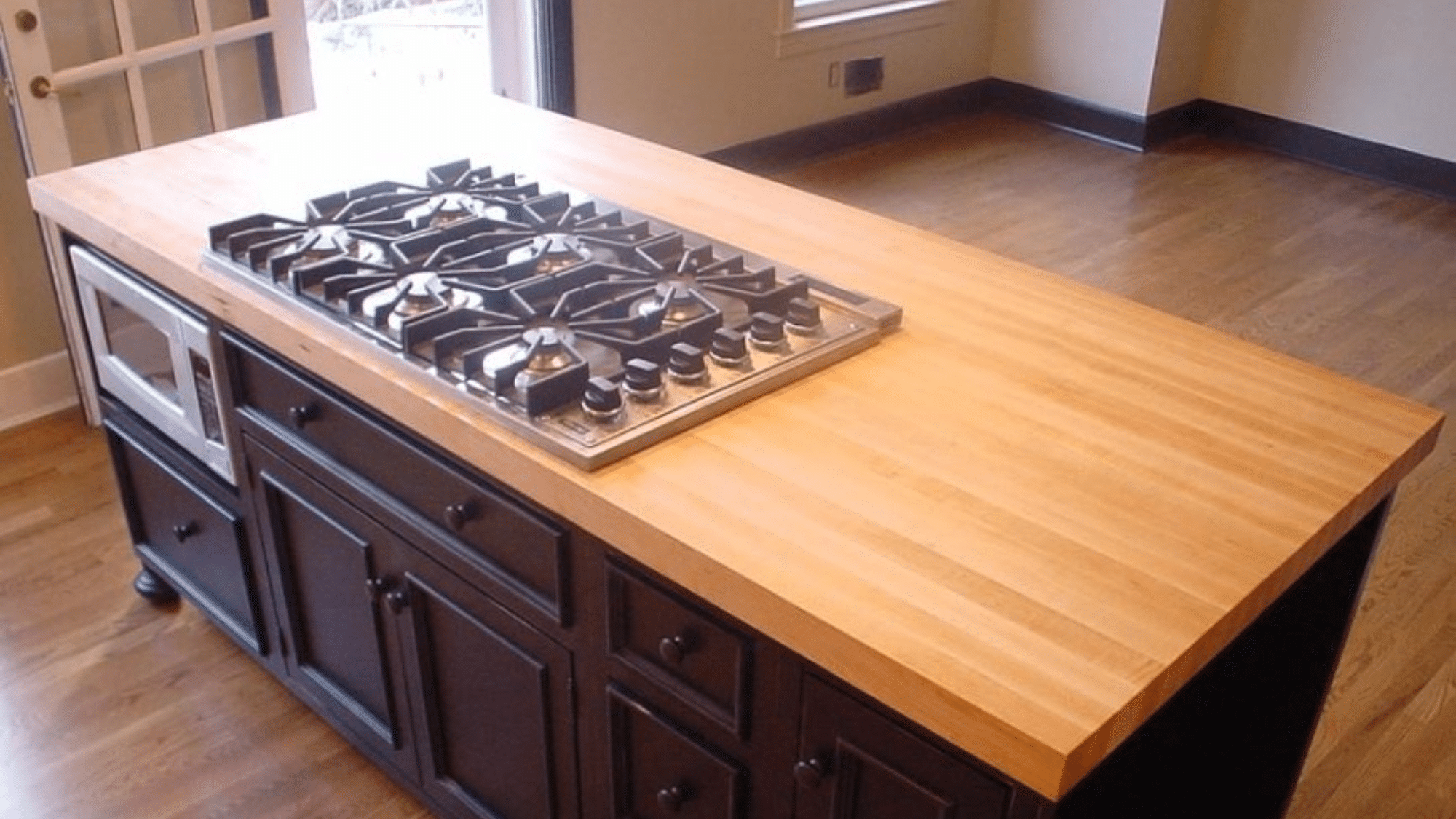
Bamboo offers an eco-friendly option that grows rapidly and regenerates quickly. This grass-based material provides surprising strength and water resistance.
The light color brightens kitchens while maintaining a clean, modern look. Bamboo costs less than most hardwoods and is easy to install.
However, it can show knife marks more readily than traditional wood options. The sustainability factor appeals to environmentally conscious homeowners.
5. Cherry Wood
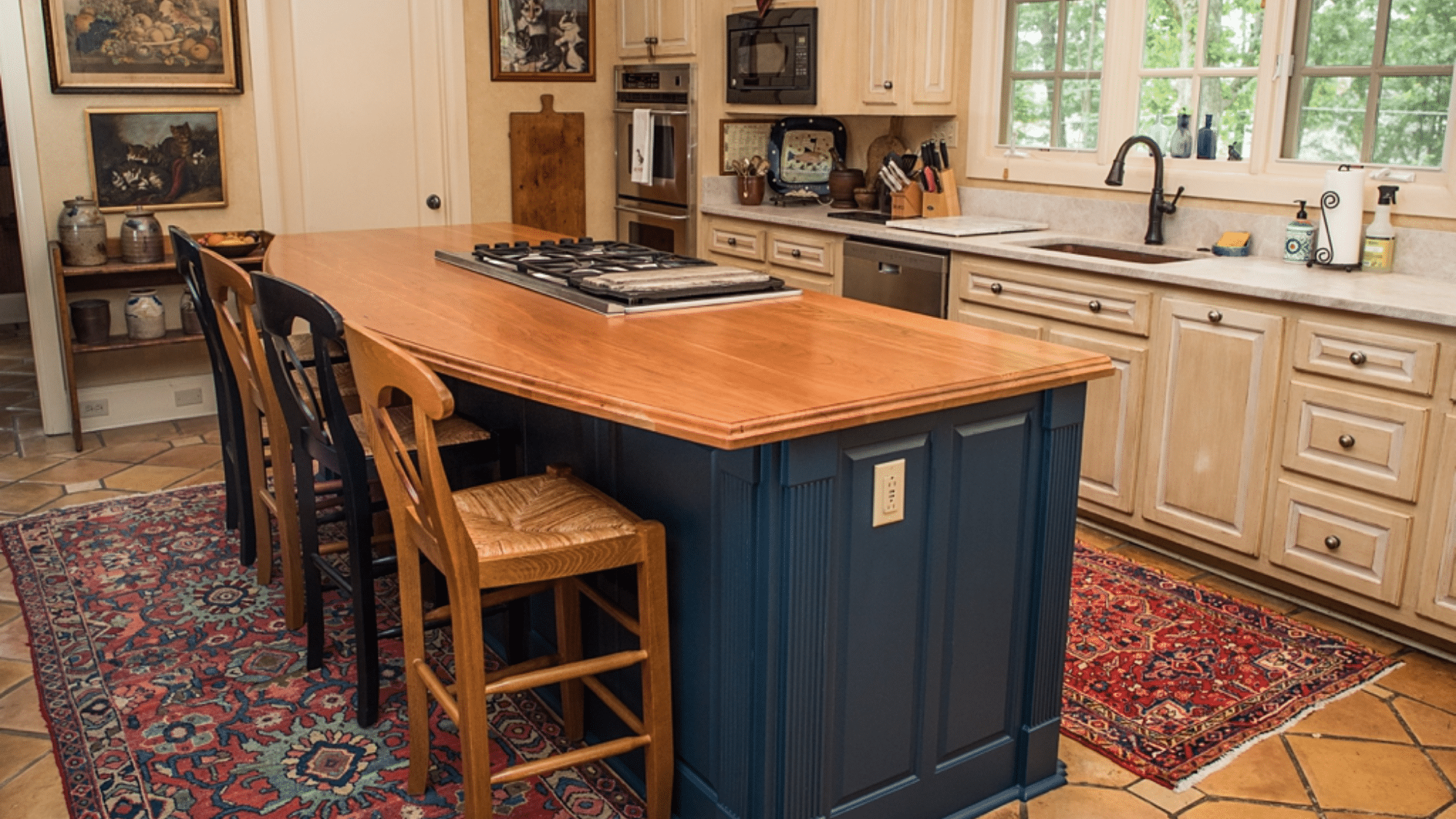
Cherry wood starts with pale pink tones that deepen into rich reddish-brown over time. This aging process creates a character that many homeowners love.
The smooth grain works well for both traditional and contemporary designs. Cherry offers moderate hardness that balances durability with workability.
It requires regular oiling to maintain its beauty. The color changes can be dramatic, so consider this natural process when planning.
6. Teak
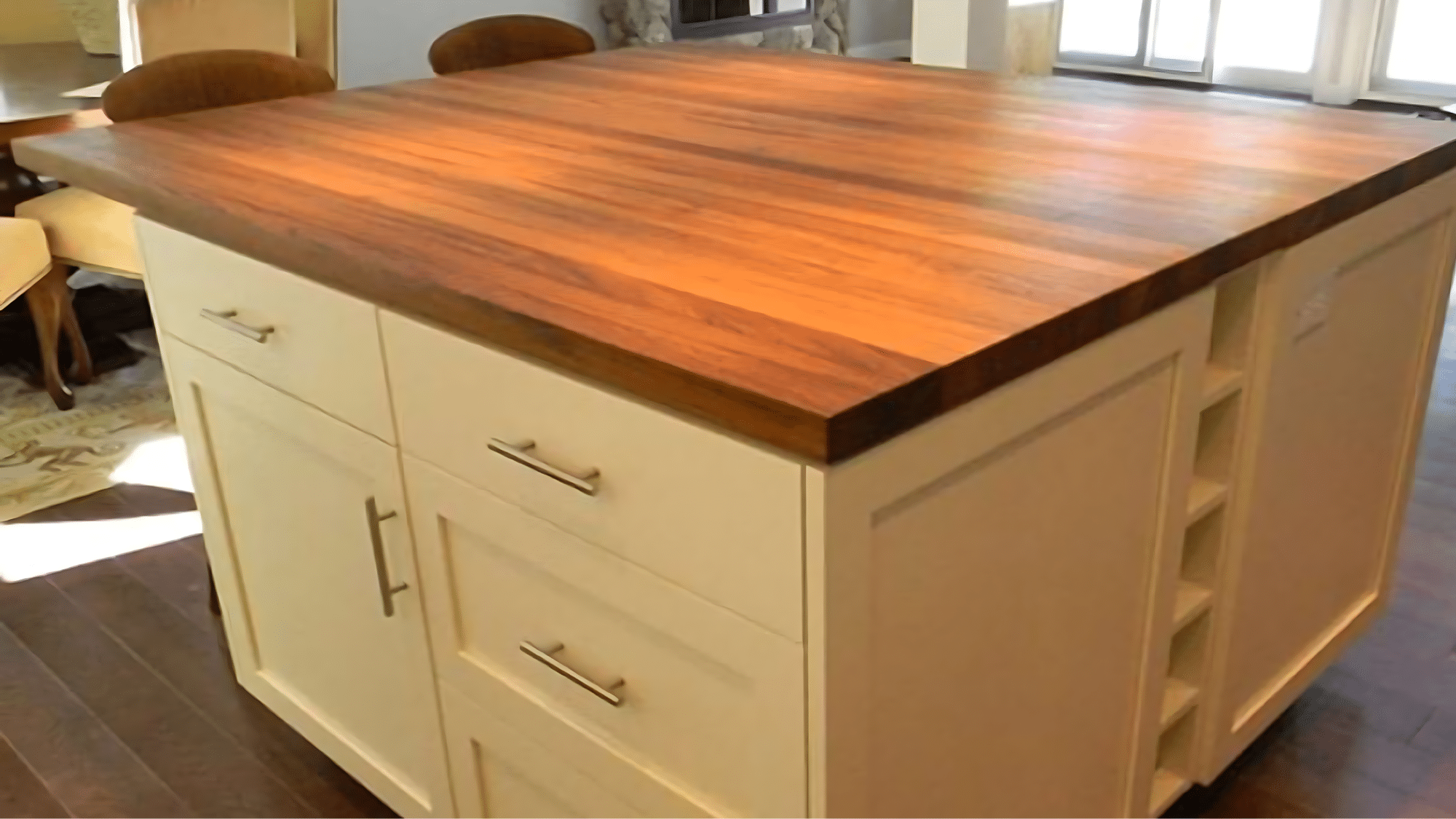
Teak provides natural moisture resistance thanks to its high oil content. This tropical hardwood handles humidity and occasional water exposure better than most options.
The golden-brown color adds warmth to any kitchen design. Teak’s density makes it highly durable, although it commands a premium price.
The natural oils can interfere with some finishes, requiring specific treatment products.
7. Acacia
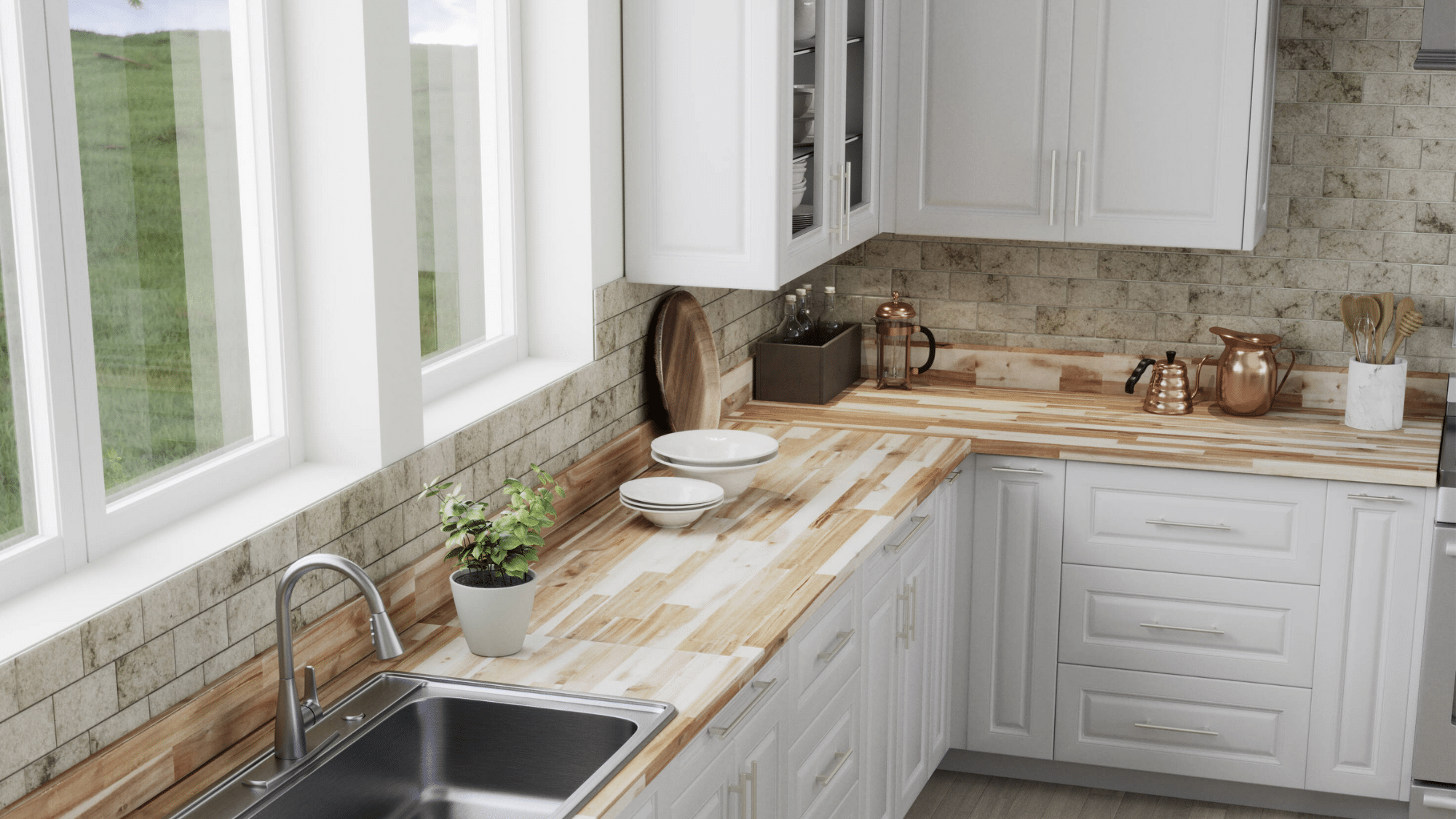
Acacia wood brings exotic beauty with dramatic grain patterns and color variations.
Each board tells a unique story through its natural markings. This moderately hard wood offers good durability at reasonable prices.
The golden-brown tones with darker streaks create visual interest. Acacia requires proper sealing due to its open grain structure. The striking appearance makes it popular for statement pieces.
8. Hevea (Rubberwood)
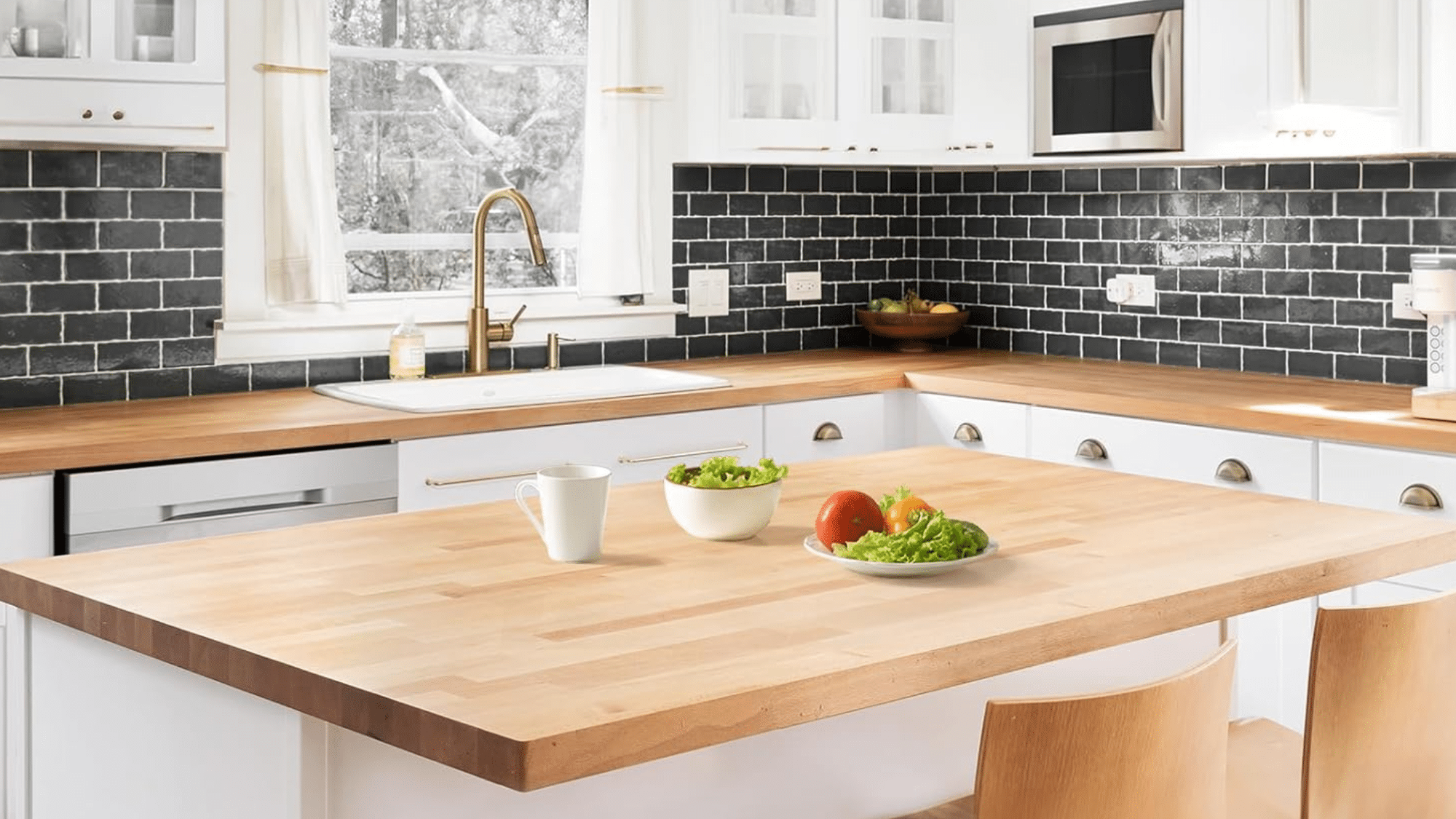
Hevea offers budget-friendly sustainability by repurposing rubber trees after latex production is complete. This pale wood accepts stains well, allowing customization to match any design.
The moderate hardness works fine for normal kitchen use. Processing removes latex allergens, making it safe for individuals with latex allergies.
While not the most challenging option, proper care significantly extends its lifespan. The affordability makes quality countertops accessible to more homeowners.
Integrating Butcher Block with Sinks: A Good Option or Not?
Yes, butcher block countertops can work beautifully with sinks when installed correctly.
The natural wood adds warmth and character that complements both farmhouse and modern kitchen designs perfectly.
However, installation requires careful planning and the use of high-quality materials. Expect higher costs for proper sealing, marine-grade sealants, and professional installation.
Regular maintenance becomes essential to prevent water damage over time.
Sinks pose the biggest challenge, as water and wood clash naturally. Proper installation, including the use of marine-grade sealants around edges, multiple finish coats on cut surfaces, and undermount sinks with adequate support, minimizes water contact and prevents warping, cracking, or mold issues.
Choosing the Right Look
The visual appeal of your butcher block depends on grain patterns, edge details, and finish choices that match your kitchen style.
Grain Patterns
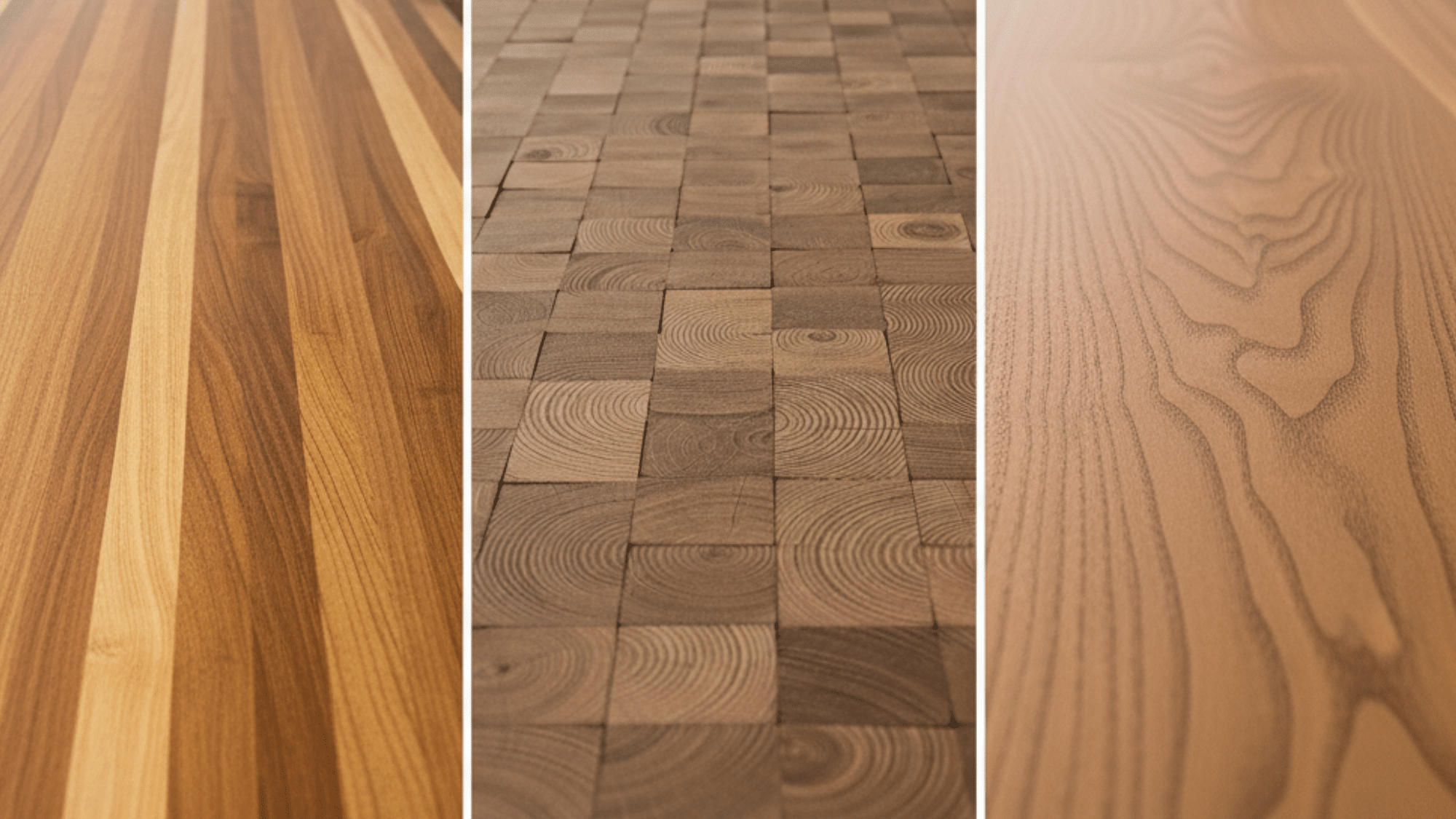
Grain refers to the orientation and display of wood fibers on the surface of the counter.
- Edge Grain: Long wood strips glued side by side, showing vertical grain lines for moderate durability.
- End Grain: Wood pieces standing upright like a checkerboard, offering maximum durability but a higher cost.
- Face Grain: Wide wood planks laid flat, displaying natural grain patterns at a lower cost but with less strength.
Edge grain works perfectly for everyday kitchens, while end grain is better suited for heavy-use areas. Face grain creates beautiful showpiece counters with a stunning grain display.
Customization Options for Butcher Block
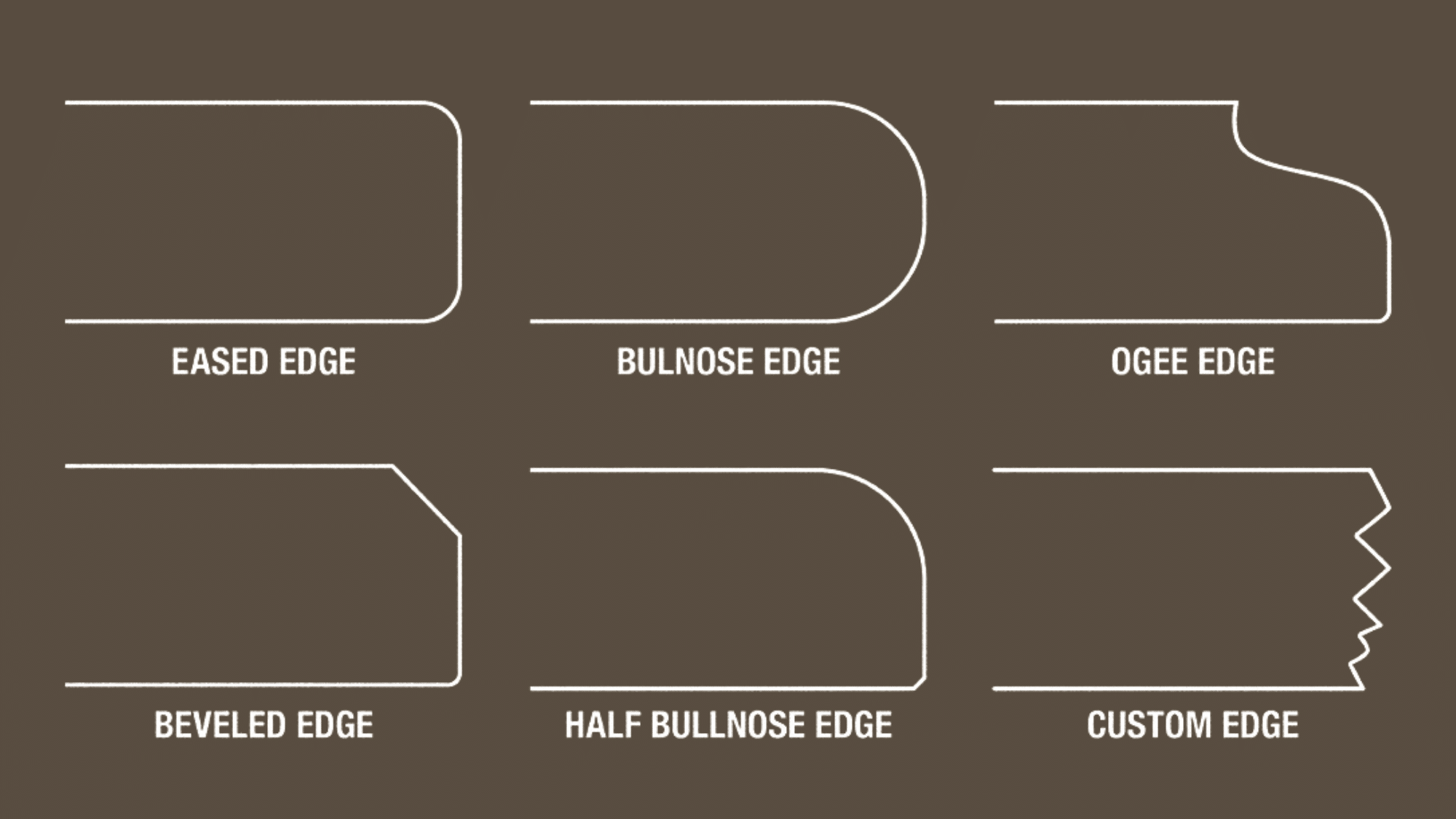
Edge profiles are the finished edges that shape your counter’s final appearance and feel. Here are a few popular edge profile options:
| Edge Profile | Description | Best For |
|---|---|---|
| Beveled | A slanted edge cut at an angle, resulting in a sharp yet polished appearance. | Modern kitchens that want a crisp, sleek finish. |
| Eased-Edge | Slightly rounded corners that keep a square look while removing sharpness. | Versatile option that works well in most design styles. |
| Ogee | Elegant, S-shaped profile that adds decorative flair. | Traditional or classic kitchens are looking for a touch of classic. |
| Bullnose | Features a fully rounded edge for a smooth, continuous finish. | Casual kitchens where durability and softness are valued. |
| Half-Bullnose | Rounded on top with a flat underside for balance. | Kitchens that want a softer look without losing structure. |
| Custom | Tailored edges designed to match unique styles or creative preferences. | Homeowners seeking a one-of-a-kind statement countertop. |
| Square | Straight, sharp edges that highlight clean lines and thickness. | Minimalist, industrial, or contemporary kitchens. |
Reclaimed wood brings history and character while supporting sustainability. Each piece tells a story through weathered textures, nail holes, and aged patina that new wood cannot replicate.
Wood Countertop Finish Options
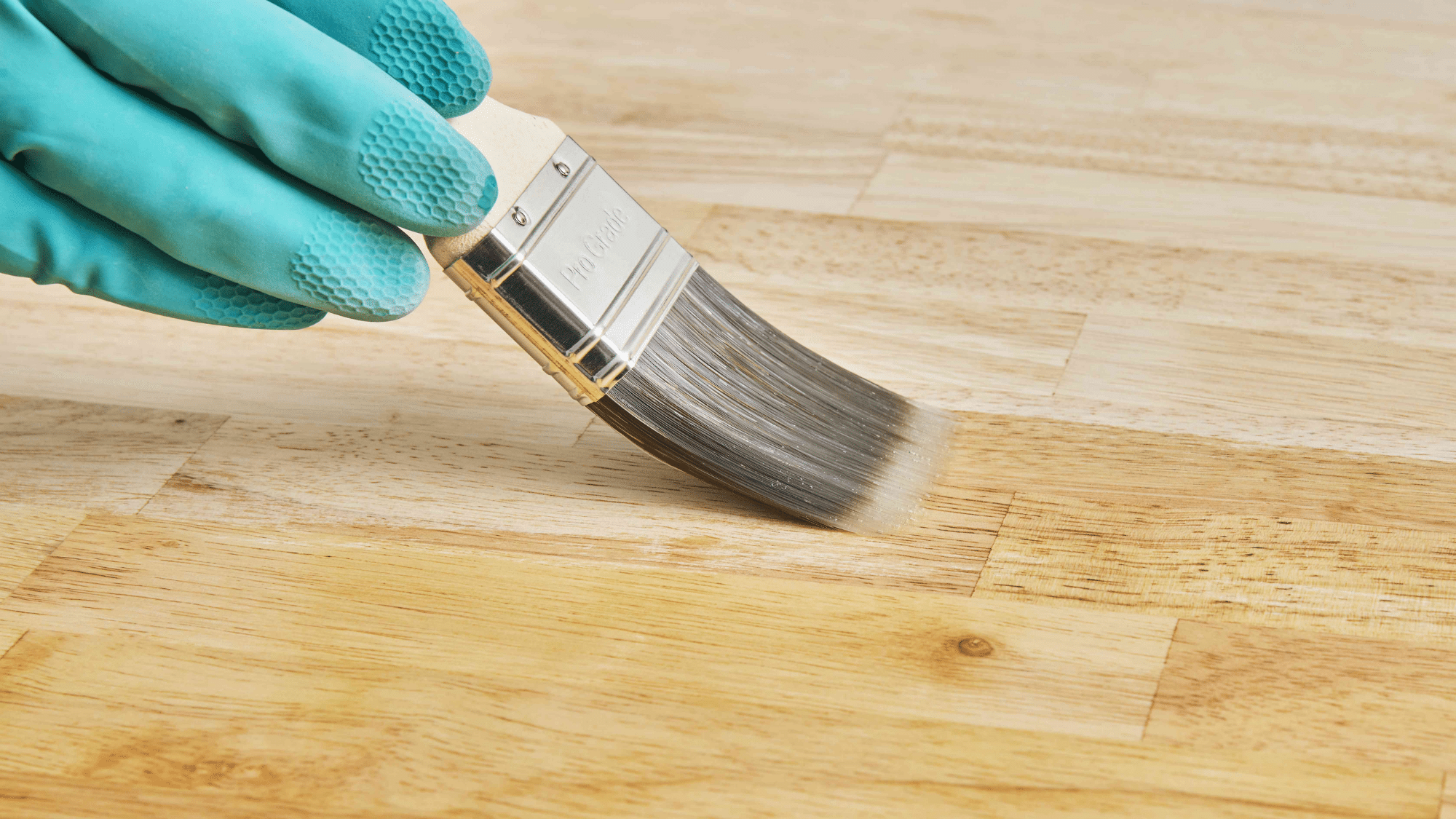
Different finishes protect wood while affecting appearance, maintenance needs, and food safety in your kitchen.
- Food-Safe Oil Finishes: Penetrates deeply into the wood grain, providing natural protection that’s safe for food-contact areas.
- Oil-Wax Blends: Combine penetrating oils with protective wax for enhanced water resistance and smooth surface feel.
- Polyurethane (Film Finish): Provides a hard, durable surface coating that effectively resists water, stains, and daily kitchen wear.
- Water-Based Finishes: Offer clear protection without yellowing, dry quickly, and maintain wood’s natural color appearance.
- Varnish or Marine-Grade Sealer: Provide maximum moisture protection with yacht-quality durability for high-exposure sink areas.
Installation & Maintenance Tips
Proper installation and regular care ensure your wood countertops last for decades while maintaining their beauty and functionality.
Installation Tips:
- Sealing Before Use: Apply multiple coats of your chosen finish before installing. Pay extra attention to cut edges and sink areas for complete protection.
- Proper Support: Ensure adequate cabinet support every 24 inches to prevent sagging. Use brackets for overhangs exceeding 8 inches.
- Acclimation: Let the wood adjust to your home’s humidity for 48 hours before installation to minimize movement.
Maintenance Tips:
- Daily Care Routines: Wipe spills immediately with a damp cloth. Clean with mild soap and water, then dry thoroughly to prevent water damage.
- Monthly Oil Treatment: Reapply food-safe oil monthly for the first year, then every 2-3 months depending on use.
- When to Sand/Re-oil: Sand lightly with 220-grit paper when the surface feels rough or stains penetrate. Follow immediately with a fresh oil application.
- Mistakes to Avoid: Never cut directly on the counter – always use cutting boards. Avoid harsh cleaners, prolonged water exposure, and placing hot pots directly on wood.
Final Thoughts
Your ideal choice depends on your cooking habits, design preferences, and budget constraints.
Maple offers unmatched durability for busy kitchens, while walnut provides luxury appeal that transforms spaces. Cherry wood ages beautifully over time, while teak naturally resists moisture.
Bamboo suits eco-conscious homeowners seeking sustainable options, and oak brings rustic charm to traditional designs.
Take time to weigh function against aesthetics before making your final decision. The right wood choice will serve your family beautifully for years to come.


